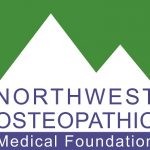EDITOR’S NOTE: The Tillamook County Pioneer is pleased to announce our newest column “In Good Health” by the Northwest Osteopathic Medical Foundation. We are proud that NWOMF selected the Pioneer as it’s first media partner to increase their outreach and education about osteopathic medicine and general wellness. Weekly columns will focus on particular topics each month. If you have suggestions for health/wellness articles, please contact editor@tillamookcountypioneer.net.
By Douglas Jorgensen, DO
The opioid ‘epidemic’ is not really an epidemic at all. It is an unfortunate, but predictable outcome. At the turn of the century, the cry was to make pain the 5th vital sign and JCAHO released pain standards to be used after much public outcry and a national desire to address pain. Mostly short acting opioids existed then and pharma responded with more meds and even created ‘abuse deterrent’ agents to help avoid illicit behavior. The race was on to treat pain.
From primary care to pain practices the new enemy was pain. From hospitals to outpatient practices getting pain under control was the key. In 2001, I was just opening my private practice specializing in osteopathic manipulative and regenerative medicine. By week six I was at six-month benchmarks and business was booming—and I was not writing many pain meds save for post prolotherapy injections.
The key was functionality. My objective was and is to make pain patients more functional. In a pain practice or any practice treating pain, function, not pain, is the outcome to be measured. To be clear osteopathic manipulative medicine was the majority of my work. Historically DOs were slow to join pharmaceutical prescribing with AT Still flying the cautionary flag and osteopathic manipulative medicine grew in popularity, but literature was mostly empiric and his concerns prophetic.
Success begets more patients and more business. As we grew, pain management, utilizing opiates and a core risk mitigation strategy: opiate agreements, pill counts, and three phase urine drug screens along with other adjuvants really made a big difference in my patients’ lives and in their functionality. OMT was still the core of our work and our point of notoriety, but using it in combination as a tool along with injections, medical management and solid clinical examinations was enormously helpful to our patients and our practice grew rapidly.
The current ‘crisis’ was a predictable and avoidable one. Many practices do not do appropriate risk mitigation when prescribing controlled substances nor do to they do appropriate risk stratification prior to commencing controlled substances. The headlines across our country make that pretty evident. We are not just talking pain meds, but that includes amphetamines for ADD/ADHD and/or benzos for ‘anxiety’ that may be best controlled via serotonin (5-HT) replacement—remember anxiety symptoms are the first symptom of 5-HT deficiency. Moreover, well intentioned state statutes setting arbitrary limits on morphine milliequivalents (MME) and how long someone could be treated drove legitimate patients to the streets. 48% (80% by some studies) of patients using street drugs use them for pain conditions their providers can’t or won’t treat. Once their dealer has no more oxycodone or hydrocodone or it is priced too high, heroin is the cheapest opioid analgesic available, but the consequences have and continue to be deadly. This too was predictable and legislative bodies were warned as history can and does repeat itself.
Body, mind and spirit are the triad upon which osteopathic treatment is based. The core tenets require us to consider these elements identifying ‘rational’ treatment related to structure and function. Shoulder pain may not be a glenohumeral joint issue, but a rib somatic dysfunction affecting the scapulothoracic joint (pseudojoint). It might even be a sacroiliac strain from a long drive that caused the shoulder pain made evident when the driver yanked her suitcase out of the trunk after her sojourn. Osteopathically trained physicians have the inherent capacity to delve into the causality of the pain and not simply inject a prepatellar bursitis because it is there. The ‘why’ it’s there is the etiologic query a solid DO would ask and identify. Perhaps the pes planus secondary to the dropped navicular from walking barefoot on the beach the day prior to her long car ride was and is the cause. Treating the navicular will normalize gait and the bursitis should resolve in due time.
However, in some instances the injury may not resolve even with solid osteopathic management. As I often remind residents and students, we are physicians first. OMT is one of our tools. We need not and should not rely solely on manual medicine if it has failed or when another treatment option may be a better option. In our zeal to ‘prove’ OMT or show its worth I have often seen colleagues futilely use manual techniques when a non-OMT treatment may work better. Doing the same thing over and over again expecting a different outcome is the definition of insanity. Doing that with OMT is no different. If documenting functional maintenance or improvement or measurable pain reduction via visual analogue pain scales, then recurrent OMT may be justified. Federal quality measures exist to prove and memorialize this logic and validate treatment. This evidence is vital to our osteopathic and fiscal survival. Osteopathy is over 100 years old because it works. Yet we must prove its worth by collecting data and proving efficacy via outcomes or we risk access to care for our patients.
As DOs, we encapsulate the comprehensive treatment paradigm. Osteopathy is not just manipulative medicine, it is a philosophy based on allowing the body to heal itself. However, in some instances, when that is not possible, our unrestricted license to practice medicine and surgery warrants further interventions in our patients’ best interest. These interventions, the likes of which I have used the last twenty years, could be pharmaceutical, injections, surgery, PT/OT, or even alternative treatment options. Osteopathy includes OMT, but not to the exclusion of other treatment options where applicable.
In the end, the fact that our patients need to regain functionality must be in the forefront of our clinical decision-making for that is exactly what they deserve.
For more information about the options available for chronic pain in Tillamook County, there is the Ivy Avenue Wellness Clinic or go to Columba-Pacific CCO website
Click this link for Dr. Jorgensen’s web page
 About Douglas Jorgensen
About Douglas Jorgensen
Douglas J. Jorgensen, DO, CPC, FAAO, FACOFP, CAQ Pain Medicine Doug Jorgensen, DO is the founder and a principal of Patient360. With 25 years of clinical experience practicing pain management and osteopathic manipulation in central Maine, Doug is triple boarded in Family Practice & OMT, Neuromusculoskeletal Medicine & Osteopathic Manipulative Medicine and he holds a CAQ in Pain Medicine. In addition, he is a Certified Professional Coder through the American Academy of Professional Coders in Salt Lake City, Utah. A consultant and lecturer, Doug speaks nationally on regulatory risk mitigation and federal policy. He has authored articles for numerous peer reviewed medical journals as well as national coding and medical newsletters. He has co-written two books and personally created several academic chapters for the medical literature. Doug holds an AB from Bowdoin College in Brunswick, Maine and a DO from the Kansas City University of Medicine and Biosciences. He attended post-doctoral residency at Maine-Dartmouth Family Practice Residency in Augusta, Maine. He serves on faculty at Dartmouth Medical School and the University of New England. Doug has lectured for Harvard Medical School, Vanderbilt University Medical School and other premier medical institutions. He has served gubernatorial appointments in health policy and held medical leadership positions regionally and nationally. In addition to work as a litigation consultant and expert witness work defending fellow doctors in criminal and civil cases, he has also consulted for the FBI, DEA and the OIG. Doug’s experience and enthusiasm make him a highly sought-after speaker at regional, national, and international conferences. AB from Bowdoin College (Brunswick, ME) DO from KC University of Medicine & Biosciences (Kansas City, MO) CPC from the American Academy of Professional Coders (Salt Lake City, UT)

For more information about NWOMF see their website at www.nwosteo.org, or David Tate, Executive Director at tate@nwosteo.org or Linda Tate, Communications Director at linda@nwosteo.org, or call 503.263.7878
// The Northwest Osteopathic Medical Foundation is a public charity committed to Advancing Wellness through the Osteopathic Approach. As a charity, we do not represent any medical school, medical association, medical practice, or individual physician.
This blog should not be considered to be medical advice. Your personal health is best discussed one-on-one with your personal physician. Rather, this blog is intended to highlight the distinctive philosophy and practice of osteopathic medicine as expressed by the author and does not necessarily represent the opinion of the Northwest Osteopathic Medical Foundation, or other Osteopathic physicians. The information and opinions are solely those of the author.

